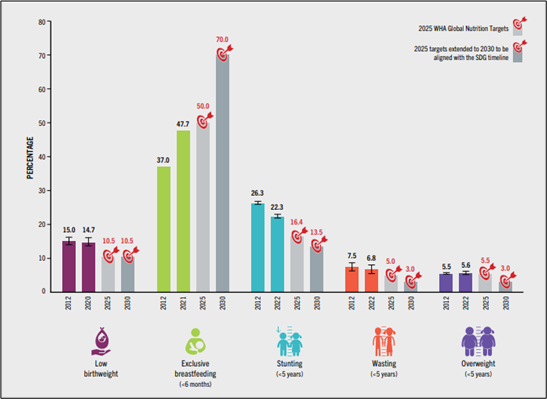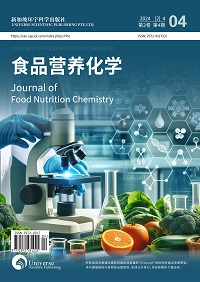找寻联系:全球粮食安全和2030年议程面临的挑战—概述
DOI:
https://doi.org/10.18686/zhfnc.v1i3.158关键词:
饥饿;食品安全;气候变化;2030年议程;可持续发展目标;发育迟缓;浪费;超重摘要
当今世界面临着各种相互关联的复杂问题,从气候变化和资源枯竭到经济差距和地缘政治紧张局势,不一而足。这些挑战对确保人类获得安全、营养和充足的食物构成了巨大障碍。本综述探讨了全球粮食安全的多面性,以及环境可持续性、农业实践和社区社会经济福祉之间错综复杂的关系。约有9.24亿人(占世界人口的11.7%)面临严重的粮食不安全问题—自COVID-19大流行以来增加了2.07亿人。造成这种状况的原因有多种,包括粮食供应网络破裂、失业率居高不下、收入减少以及粮食价格不断上涨。通过解决围绕粮食安全的一系列问题,并根据联合国《2030 年可持续发展议程》协调努力,国际社会可以为建设更具弹性、可持续和公平的全球粮食体系铺平道路。

##submission.downloads##
已出版
文章引用
期
栏目
执照
版权声明
CC BY-NC 4.0作者应保留其作品的版权,并授予期刊/出版商首次出版该作品的权利,同时根据以下条款获得许可: 知识共享署名-非商业性4.0国际版(CC BY-NC 4.0)。本许可证允许复制、分发和传播作品,前提是声明了原创作者的正确归属。
参考
1. Food and Agriculture Organization of the United Nations. UN report: Global hunger numbers rose to as many as 828 million in 2021. Available online: https://www.fao.org/newsroom/detail/un-report-global-hunger-sofi-2022-fao/en#:~:text=Nearly%20924%20million%20people%20(11.7,207%20million%20in%20two%20years (accessed on 25 December 2023).
2. United Nations. Transforming our world: The 2030 agenda for sustainable development. Available online: https://sdgs.un.org/2030agenda (accessed on 25 December 2023).
3. World Health Orgnization. Global NCD target halt the rise in obesity. Available online: https://iris.who.int/bitstream/handle/10665/312281/WHO-NMH-NMA-16.192-eng.pdf?sequence=1&isAllowed=y (accessed on 25 December 2023).
4. Food and Agriculture Organization of the United Nations. The state of food security and nutrition in the world 2023: Urbanization, agrifood systems transformation and healthy diets across the rural–urban continuum Available online: https://www.fao.org/documents/card/en/c/cc3017en (accessed on 25 December 2023).
5. Global Nutrition Report. 2022 global nutrition report. Available online: https://globalnutritionreport.org/reports/2022-global-nutrition-report/ (accessed on 25 December 2023).
6. von Grebmer K, Bernstein J, Wiemers M, et al. In: Fritschel H (editor). 2023 Global Hunger Index: The Power of Youth in Shaping Food Systems. Welthungerhilfe; 2023.
7. UNICEF, WHO, International Bank for Reconstruction and Development, The World Bank. Levels and TRENDS IN CHILD MALNUTRition: UNICEF/WHO/World Bank Group Joint Child Malnutrition Estimates: Key Findings of the 2023 Edition. UNICEF and WHO; 2023.
8. Quamme SH, Iversen PO. Prevalence of child stunting in Sub-Saharan Africa and its risk factors. Clinical Nutrition Open Science 2022; 42: 49–61. doi: 10.1016/j.nutos.2022.01.009
9. UNICEF. Stop stunting: Power of maternal nutrition. Available online: https://www.unicef.org/rosa/reports/stop-stunting (accessed on 25 December 2023).
10. Khanum ML. The silent issue of rising malnutrition in the Indian subcontinent. Available online: https://spheresofinfluence.ca/rising-malnutrition-in-the-indian-subcontinent/ (accessed on 25 December 2023).
11. Krishna A, Mejía‐Guevara I, McGovern M, et al. Trends in inequalities in child stunting in South Asia. Maternal & Child Nutrition 2017; 14(S4). doi: 10.1111/mcn.12517
12. Smith LC, Haddad L. Reducing child undernutrition: Past drivers and priorities for the post-MDG era. World Development 2015; 68: 180–204. doi: 10.1016/j.worlddev.2014.11.014
13. UNICEF, WHO, World Bank Group. Levels and trends in child malnutrition. Available online: https://iris.who.int/bitstream/handle/10665/368038/9789240073791-eng.pdf?sequence=1 (accessed on 25 December 2023).
14. Li Z, Kim R, Vollmer S, et al. Factors associated with child stunting, wasting, and underweight in 35 low- and middle-income countries. JAMA Network Open 2020; 3(4): e203386. doi: 10.1001/jamanetworkopen.2020.3386
15. Harding KL, Aguayo VM, Webb P. Factors associated with wasting among children under five years old in South Asia: Implications for action. PLoS One 2018; 13(7): e0198749. doi: 10.1371/journal.pone.0198749
16. Torlesse H, Le MT. South Asia and child wasting—Unravelling the conundrum. Available online: https://www.ennonline.net/fex/63/southasiachildwasting (accessed on 25 December 2023).
17. Mertens A, Benjamin-Chung J, Colford JM, et al. Child wasting and concurrent stunting in low- and middle-income countries. Nature 2023; 621: 558–567. doi: 10.1038/s41586-023-06480-z
18. Headey D, Heidkamp R, Osendarp S, et al. Impacts of COVID-19 on childhood malnutrition and nutrition-related mortality. The Lancet 2020; 396(10250): 519–521. doi: 10.1016/s0140-6736(20)31647-0
19. Saha J, Chouhan P, Ahmed F, et al. Overweight/obesity prevalence among under-five children and risk factors in India: A cross-sectional study using the national family health survey (2015–2016). Nutrients 2022; 14(17): 3621. doi: 10.3390/nu14173621
20. FAO, IFAD, UNICEF, et al. The State of Food Security and Nutrition in the World 2023: Urbanization, Agrifood Systems Transformation and Healthy Diets across the Rural-Urban Continuum. FAO; 2023. 316p. doi: 10.4060/cc3017en
21. World Health Organization. Global nutrition targets 2025: Low birth weight policy brief. Available online: https://iris.who.int/bitstream/handle/10665/149020/WHO_NMH_NHD_14.5_eng.pdf?sequence=2 (accessed on 25 December 2023).
22. Larroque B, Bertrais S, Czernichow P, et al. School difficulties in 20-year-olds who were born small for gestational age at term in a regional cohort study. Pediatrics 2001; 108(1): 111–115. doi: 10.1542/peds.108.1.111
23. Risnes KR, Vatten LJ, Baker JL, et al. Birthweight and mortality in adulthood: A systematic review and meta-analysis. International Journal of Epidemiology 2011; 40(3): 647–661. doi: 10.1093/ije/dyq267
24. UNICEF. Saving lives and giving newborns the best start: Critical nutrition interventions for mothers and infants in the perinatal period. Available online: https://www.healthynewbornnetwork.org/hnn-content/uploads/Saving-lives-and-giving-newborns-the-best-start.pdf (accessed on 25 December 2023).
25. WHO. Global nutrition target 2025: Poloct brief series. Available online: https://apps.who.int/iris/rest/bitstreams/665585/retrieve (accessed on 25 December 2023).
26. WHO. Obesity and over weight. Available online: https://www.who. int/news-room/fact-sheets/detail/obesity-and-overweight#:~:text=Of%20these%20 (accessed on 25 December 2023).
27. WHO. World obesity day 2022—Accelerating action to stop obesity. Available online: https://www.who.int/news/item/04-03-2022-world-obesity-day-2022-accelerating-action-to-stop-obesity (accessed on 25 December 2023).
28. Hassapidou M, Vlassopoulos A, Kalliostra M, et al. European association for the study of obesity position statement on medical nutrition therapy for the management of overweight and obesity in adults developed in collaboration with the European federation of the associations of dietitians. Obesity Facts 2023; 16(1): 11–28. doi: 10.1159/000528083
29. Scully T, Ettela A, LeRoith D, Gallagher EJ. Obesity, type 2 diabetes, and cancer risk. Frontiers in Oncology 2021; 10: 615375. doi: 10.3389/fonc.2020.615375
30. Fore HH, Dongyu Q, Beasley DM, et al. Child malnutrition and COVID-19: The time to act is now. The Lancet 2020; 396(10250): 517–518. doi: 10.1016/s0140-6736(20)31648-2
31. Laborde D, Martin W. Poverty and food insecurity could grow dramatically as COVID-19 spreads. International Food Policy Research Institute 2020. doi: 10.2499/p15738coll2.133762_02
32. Fore HH, Qu D, Beasley DM, Ghebreyesus TA. Child malnutrition and COVID-19: The time to act is now. The Lancet 2020; 396(10250): 517–518. doi: 10.1016/S0140-6736(20)31648-2
33. Glauber JW, Laborde Debucquet D. The Russia-Ukraine conflict and global food security. International Food Policy Research Institute 2023. doi: 10.2499/9780896294394
34. Popkin BM. Nutrition, agriculture and the global food system in low and middle income countries. Food Policy 2014; 47: 91–96. doi: 10.1016/j.foodpol.2014.05.001
35. FAO. The impact of disasters and crises on agriculture and food security: 2021. Available online: https://www.fao.org/3/cb3673en/cb3673en.pdf (accessed on 25 December 2023).
36. The World Bank. The locust crisis: The World Bank’s response. Available online: https://www.worldbank.org/en/news/factsheet/2020/04/27/the-locust-crisis-the-world-banks-response (accessed on 25 December 2023).
37. FAO. 2021: The impact of disasters and crises on agriculture and food security. Available online: https://www.fao.org/3/cb3673en/cb3673en.pdf (accessed on 25 December 2023).
38. World Food Summit. Rome declaration on world food security. Available online: http://www.fao.org/3/w3613e/w3613e00.htm (accessed on 25 December 2023).
39. Global Nutrition Report. 2020 global nutrition report. Available online: https://globalnutritionreport.org/reports/2020-global-nutrition-report/ (accessed on 25 December 2023).
40. Pate MA, Nieuwkoop MV. How nutrition can protect people’s health during COVID-19. Available online: https://blogs.worldbank.org/voices/how-nutrition-can-protect-peoples-health-during-COVID-19 (accessed on 25 December 2023).
41. McAuliffe S, Ray S, Fallon E, et al. Dietary micronutrients in the wake of COVID-19: An appraisal of evidence with a focus on high-risk groups and preventative healthcare. BMJ Nutrition, Prevention & Health 2020; 3(1): 93–99. doi: 10.1136/bmjnph-2020-000100
42. Lin F, Li X, Jia N, et al. The impact of Russia-Ukraine conflict on global food security. Global Food Security 2023; 36: 100661. doi: 10.1016/j.gfs.2022.100661
43. Clapp J, Moseley WG. This food crisis is different: COVID-19 and the fragility of the neoliberal food security order. The Journal of Peasant Studies 2020; 47(7): 1393–1417. doi: 10.1080/03066150.2020.1823838
44. World Food Programme. 2019—The state of food security and nutrition in the world (SOFI): Safeguarding against economic slowdowns and downturns Available online: https://www.wfp.org/publications/2019-state-food-security-and-nutrition-world-sofi-safeguarding-against-economic (accessed on 25 December 2023).
45. Haley E, Caxaj S, George G, et al. Migrant farmworkers face heightened vulnerabilities during COVID-19. Journal of Agriculture, Food Systems, and Community Development 2020; 9(3): 35–39. doi: 10.5304/jafscd.2020.093.016
46. Richter F. Why the war in Ukraine threatens global food security. Available online: https://www.statista.com/chart/27225/russian-and-ukrainian-share-of-global-crop-exports/ (accessed on 25 December 2023).
47. Ashford NA, Hall RP, Arango-Quiroga J, et al. Addressing inequality: The first step beyond COVID-19 and towards sustainability. Sustainability 2020; 12(13): 5404. doi: 10.3390/su12135404
48. Klassen S, Murphy S. Equity as both a means and an end: Lessons for resilient food systems from COVID-19. World Development 2020; 136: 105104. doi: 10.1016/j.worlddev.2020.105104
49. World Health Organization. 1 in 3 people globally do not have access to safe drinking water—UNICEF, WHO. Available online: https://www.who.int/news/item/18-06-2019-1-in-3-people-globally-do-not-have-access-to-safe-drinking-water-unicef-who (accessed on 25 December 2023).
50. Ekumah B, Armah FA, Yawson DO, et al. Disparate on-site access to water, sanitation, and food storage heighten the risk of COVID-19 spread in Sub-Saharan Africa. Environmental Research 2020; 189: 109936. doi: 10.1016/j.envres.2020.109936
51. Power K. The COVID-19 pandemic has increased the care burden of women and families. Sustainability: Science, Practice and Policy 2020; 16(1): 67–73. doi: 10.1080/15487733.2020.1776561
52. McLaren HJ, Wong KR, Nguyen KN, et al. COVID-19 and women’s triple burden: Vignettes from Sri Lanka, Malaysia, Vietnam and Australia. Social Sciences 2020; 9(5): 87. doi: 10.3390/socsci9050087
53. Food and Agriculture Organization of the United Nations. Gendered impacts of COVID-19 and equitable policy responses in agriculture, food security and nutrition. Available online: http://www.fao.org/documents/card/en/c/ ca9198en (accessed on 25 December 2023).
54. Schaner S, Moore CT. Enhancing Women’s Economic Empowerment Through Digital Cash Transfers: Analysis of the Digitize/Direct/Design Criteria Applied to the National Rural Employment Guarantee Scheme in Bihar, India. Harvard Kennedy School; 2019.
55. IDEATE. Enhancing Women’s Economic Empowerment Through Digital Cash Transfers: What Do We Learn from the Digitize/Direct/Design (D3) Criteria in the Case of Benazir Income Support Program in Pakistan? KARANDAAZ; 2018.
56. Myamba F, Pulver C. Enhancing women’s economic empowerment through digital cash transfers: Digitize/direct/design (D3) Criteria—An Application. Available online: https://www.findevgateway.org/sites/default/files/publications/files/_d3_final_report_tanzania.pdf (accessed on 25 December 2023).
57. World Food Programme. Global monitoring of school meals during COVID-19 closures. Available online: https://cdn.wfp.org/2020/school-feeding-map/ (accessed on 25 December 2023).
58. Glauber J, Laborde Debucquet D, Martin W, et al. COVID-19: Trade restrictions are worst possible response to safeguard food security. International Food Policy Research Institute 2020. doi: 10.2499/p15738coll2.133762_14
59. Bracale R, Vaccaro CM. Changes in food choice following restrictive measures due to COVID-19. Nutrition, Metabolism and Cardiovascular Diseases 2020; 30(9): 1423–1426. doi: 10.1016/j.numecd.2020.05.027
60. Worstell J. Ecological resilience of food systems in response to the COVID-19 crisis. Journal of Agriculture, Food Systems, and Community Development 2020; 9(3), 23–30. doi: 10.5304/jafscd.2020.093.015
61. Lal R. Home gardening and urban agriculture for advancing food and nutritional security in response to the COVID-19 pandemic. Food Security 2020; 12(4): 871–876. doi: 10.1007/s12571-020-01058-3
62. FAO. Food Outlook—Biannual Report on Global Food Markets. FAO; 2020. 169p. doi: 10.4060/ca9509en


